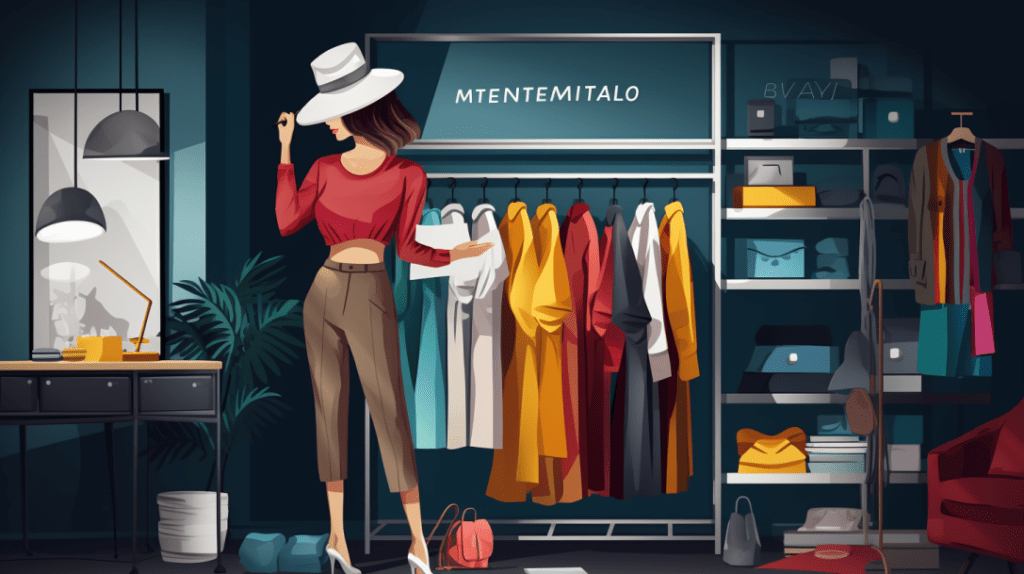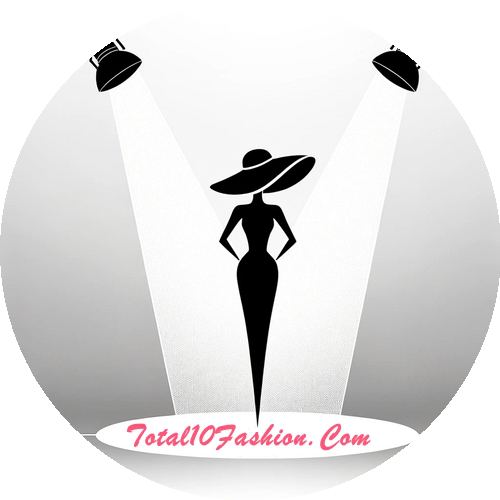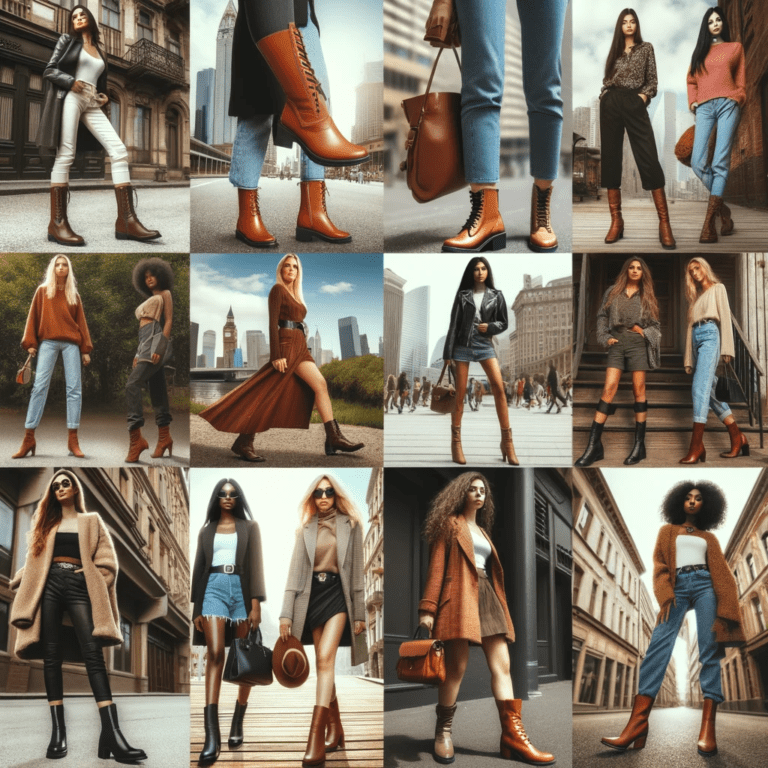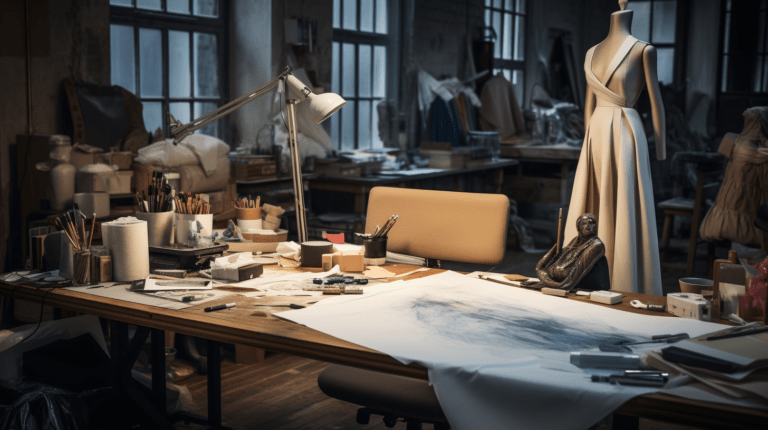How to be a fashion stylist – Imagine yourself amidst a whirl of high fashion – designer gowns, avant-garde accessories, and the latest couture. Now picture that chaos tamed by your discerning eye and artistic touch.
Welcome to the world of fashion styling where chaos meets creativity, where you’re not just following trends but setting them. You’ll need more than just a keen eye for style; it’s about understanding the industry, honing necessary skills, educating yourself about fashion history and culture, building an impressive portfolio, networking effectively in the industry, finding clients who value your vision and staying current with ever-evolving fashion trends.
This isn’t for those who crave simplicity or predictability – this is for those hungry for power in shaping perceptions and dictating tastes. So strap on your highest heels or lace up your sharpest brogues – we’re going to explore how you can become a stylist in the fast-paced world of fashion.
Key Takeaways- How To Be A Fashion Stylist
- Building a strong portfolio showcasing diverse styles and collaborations with well-known brands or personalities is crucial for a fashion stylist.
- Networking and seeking mentorship opportunities from experienced professionals are essential for success in the fashion industry.
- Staying current with fashion trends through trend forecasting, runway shows, and social media engagement is crucial for interpreting and applying trends creatively.
- Diversifying into relevant fields like personal shopping or image consulting can increase visibility and income potential for a fashion stylist.
Understanding What a Fashion Stylist Does – How to be a fashion stylist
Before you dive headfirst into the glamorous world of fashion styling, it’s essential to really understand what a stylist’s job entails.

At its core, a fashion stylist is an influencer, a trendsetter who uses their keen eye for detail and style to curate looks that captivate and inspire. It’s about more than just selecting outfits; it’s about weaving together a narrative through clothing, accessories, and aesthetic choices.
A stylist’s responsibilities are multifaceted. They’re responsible for creating visual concepts that translate across various mediums like magazines, music videos, TV shows or even personal wardrobes. This requires maintaining an up-to-date knowledge of current trends while also predicting future ones. Additionally, they consult with designers and brands to create cohesive looks during fashion weeks or campaigns.
Role variations within the industry might see stylists working independently or being part of larger creative teams where they collaborate with photographers, models, makeup artists and hair stylists. Some specialize in editorial styling which involves conceptualizing photographs for magazine articles while others may choose personal styling which is centered around enhancing individuals’ image based on their personality and lifestyle.
Despite the glamour associated with this profession, remember that it demands hard work as well as creativity – think long hours coordinating shoots or scouring stores for the perfect piece. Your power lies in how you wield your influence to shape trends rather than merely following them.
Getting ready to step into the stylish shoes of a fashion stylist requires understanding these nuances first before moving onto acquiring the necessary skills which will form our discussion in the next section.
Acquiring the Necessary Skills – How to be a fashion stylist
Imagine yourself perusing the latest glossy magazines, absorbing every detail of each page’s ensemble, not just for entertainment but to hone your ability in predicting trends and understanding what makes an outfit pop. Every piece tells a story—how it’s worn, how it’s paired with other pieces, and more importantly, why it works.
To become a top-notch fashion stylist, you need to acquire some key skills and develop an eagle eye for details. Here are the necessary skills you should focus on:

- Mastering sewing techniques: This means going beyond basic stitches. Learn about different fabrics, patterns, and how they can be manipulated to create stunning outfits.
- Developing personal style: As much as you want to cater to clients’ preferences, having a unique style that distinguishes you from others is crucial.
- Staying updated on current fashion trends: Follow influential designers and stylists on social media platforms like Instagram and Pinterest.
- Understanding body types and styles that suit them: Each body type has specific styles that flatter them best.
In this journey towards becoming a fashion stylist extraordinaire, remember that practice makes perfect. Spend time experimenting with different ensembles; take risks in combining unconventional pieces together; learn how colors interact with one another; focus on enhancing your sewing skills; most importantly, cultivate your individual style. The power lies in making right decisions at the right time – knowing when to follow the trend or break away from it.
Avoid limiting yourself within the confines of theoretical knowledge only. There’s much more than meets the eye when dressing someone up – it’s about boosting their confidence while showcasing your creativity! Now let’s delve deeper into acquiring formal education tailored specifically for aspiring fashion stylists such as yourself.
Getting the Right Education – How to be a fashion stylist
While mastering hands-on skills is essential, getting a formal education in related fields can give you a broader understanding and a competitive edge in this industry. You might wonder if it’s worth the time and money, but remember, knowledge is power.
Degrees like fashion design, fashion merchandising, or even business management can enable you to grasp the full spectrum of the fashion world. They’ll also provide an opportunity for you to develop your sense of style and creativity.
However, obtaining an education requires financial investment. Fear not! There are plenty of educational funding options available for budding stylists like yourself. Scholarships and grants are out there waiting for talented individuals with passion and drive. Some schools offer work-study programs where you can earn while learning. Student loans are also an option, though they should be approached cautiously due to potential debt accumulation.

Degree selection is another pivotal step on your journey to becoming a stylist. Whether it’s Fashion Design or Business Studies depends on your personal interest and career goals. If designing clothing fires up your creativity, go with Fashion Design; if overseeing operations sound more appealing, choose Business Studies.
Remember: Rome wasn’t built in a day, and neither will your career be – patience is key here! Throughout this process, keep yourself updated with emerging trends; devour every bit of information about designers’ collections, fashion weeks around the globe, celebrity styles, or street fashions.
Now that we’ve covered how acquiring the right education helps shape you into a formidable stylist, let’s dive into creating your own unique portfolio where all these elements come together, showcasing your creative genius.
Building a Portfolio – How to be a fashion stylist
Crafting a captivating collection of your creative work is crucial in carving out your career. Your portfolio, the tangible evidence of your fashion sense and styling prowess, must be curated meticulously to showcase your distinct style and versatility. This Portfolio Presentation becomes the visual representation of what you can bring to the table as a stylist.
Your portfolio should not only display striking images but also tell compelling stories about each ensemble. Here are some tips on how to create an impressive Creativity Display:
- Choose high-quality photos that highlight your best styling works.
- Include diversity in terms of styles, themes, and concepts.
- Showcase collaborations with well-known brands or personalities if any.
- Provide context for each look by adding brief descriptions or narratives.
- Regularly update it with new works reflecting current trends.
Remember, potential clients will judge you based on this presentation; hence it must resonate with them while also asserting your unique aesthetics.

However, building a stellar portfolio is not just about showing off the glitz and glamour. It’s about demonstrating how you interpret fashion trends and translate them into wearable art pieces. Show how you can transform ordinary outfits into extraordinary looks using accessories or innovative layering techniques.
Your portfolio will act as a launchpad for conversations with prospective clients or employers — always be ready to defend your choices and elaborate on what inspired certain looks.
Now that you have laid down the foundation through education and built an eye-catching portfolio showcasing your flair for fashion, it’s time to take another significant step forward: networking in the fashion industry can offer valuable connections necessary for growth. It’s vital to establish relationships that could lead to exciting opportunities in this dynamic field.
Networking in the Fashion Industry – How to be a fashion stylist
In this cutthroat world, it’s not just what you know but who you know that can make all the difference. As a budding fashion stylist, networking is your bread and butter. This industry thrives on relationships, connections, and collaborations.

So get out there, be brave, and start building your network.
Your first stop should be industry events. Fashion weeks, trade shows, launch parties – these are the places where the movers and shakers of the fashion world congregate. Not only will you gain valuable insights into upcoming trends and market dynamics at these events, but rubbing shoulders with designers, models, photographers can open up new avenues for collaboration.
However, don’t limit yourself to these high-profile events; smaller gatherings like seminars or workshops can also provide valuable connections. Plus they often offer more intimate settings which can facilitate deeper conversations.
Seek mentorship opportunities as well. A seasoned mentor has been where you are now and navigated their way successfully through this unpredictable industry. They can impart invaluable advice that is tailored specifically to your situation while guiding you towards resources that may not be readily apparent or accessible otherwise.
Remember though: networking isn’t about collecting contacts—it’s about fostering relationships. Be authentic in your interactions because people connect with sincerity rather than a sales pitch.
From here on out it’s all about maintaining those relationships while continuously expanding your network in every direction possible. The bigger your network becomes; the more opportunities will present themselves—the perfect runway to finding your first clients—proving once again that power lies not only in knowledge but also in connection within the fashion industry.
Finding Your First Clients – How to be a fashion stylist
Having developed a solid network in the fashion industry, it’s time to leverage those connections and take the leap into finding your first clients. It’s crucial that you make this step with an unwavering sense of self-belief, armed with a clear vision of your unique branding strategies.

The initial stage involves identifying potential clients. You must know who you’re targeting: are they individuals seeking personal styling advice or brands requiring comprehensive style consultation? Once identified, client communication becomes key. Establishing effective communication channels will not only set professional boundaries but also foster trust between you and your clients.
Here’s a quick guide on how to approach different types of clients:
| Type of Client | Approach | Expected Outcome |
|---|---|---|
| Individual Client | Personalized Consultation; Showcasing portfolio; Offering trial services. | Long term commitment; Word-of-mouth referrals. |
| Brand/Company | Pitching unique ideas that aligns with their brand image; Providing detailed stylistic analysis. | Contractual work; Increased visibility in industry circles. |
| Celebrity/Influencer | Tailoring looks based on personality & public image; Ensuring comfort while pushing fashion boundaries. | Regular engagements for events/shows/appearances; High-profile exposure |
Remember, each type demands distinct approaches and rewards uniquely. Ensure consistency and authenticity in every interaction – these qualities are invaluable currency in the world of fashion.
As you conquer this monumental milestone, remember that stagnancy is detrimental to any stylist’s career. The fashion world is dynamic, always evolving – as should be your styling strategies and design sensibilities.
Now that we’ve discussed landing your first clients, let’s delve into ensuring longevity in this fast-paced industry by staying current with fashion trends.
Staying Current with Fashion Trends – How to be a fashion stylist
Just like a chameleon changing its colors to blend with the environment, you’ll need to stay on top of the latest trends to ensure your designs and strategies don’t fade into oblivion. In this relentless fashion world, trend forecasting becomes your best ally. It’s a powerful tool allowing you to predict what colors, fabrics, and styles will be popular in future seasons.

To achieve this mastery, stay tuned into runway shows. Fashion weeks are the birthplaces of new trends. Don’t just watch – analyze, dissect each collection for insights.
Engage with social media. The influence of digital platforms is undeniable in today’s world. Follow influential designers and fashion bloggers who often set trends before they hit mainstream.
Attend trade shows and exhibitions. This gives you access to upcoming collections before they hit stores.
Each method provides distinct insights that can help shape your vision as a stylist.
However, mastering these skills isn’t enough – you must also understand how to interpret and apply these trends creatively within your client’s unique style narrative.
Now we’re not saying it’s easy; it demands time, dedication, and an unwavering passion for all things vogue-y! But remember: power lies in knowledge – the more informed you are about current fashion movements, the better equipped you’ll be at crafting individualistic styles that resonate with your clients’ persona while staying au courant.
As these methodologies become second nature and as you build up a strong reputation within the industry based on your knack for nailing trends spot-on every time, opportunities will naturally follow which fuels growth in your career as an authoritative stylist.
Growing Your Career – How to be a fashion stylist
Having a keen eye on the pulse of fashion trends is paramount, yet that’s just one piece of your stylistic puzzle. Now, it’s time to delve into the next stage of your journey: growing your career as a fashion stylist.

Powering through this industry requires more than just talent and knowledge. It demands strategic planning, perseverance, creativity, and a knack for networking. Mentorship benefits cannot be overstated in this realm. Finding an experienced mentor to guide you can open up avenues previously unthought-of, providing invaluable professional advice and contacts within the industry.
Balancing creativity with business acumen is an artform in itself. While it’s important to maintain an innovative mindset and create stunning ensembles that push boundaries, don’t lose sight of practical considerations such as budget constraints or client preferences. After all, our power lies not only in creating masterpieces but also ensuring they fit seamlessly into real-life scenarios.
In order to thrive rather than just survive in this highly competitive field, you need to constantly evolve – not just with fashion trends but also by expanding your skill set. Consider diversifying into relevant fields like personal shopping or image consulting. The more services you offer, the wider your customer base will be – thus increasing both your visibility and income potential.
Remember though; each step forward doesn’t necessarily have to be monumental leaps towards stardom. Small steps count too! Whether it’s attending a networking event or learning new makeup techniques – every action contributes towards making you stand out from the crowd.
Growing your career is about much more than climbing the ladder; it’s about continually refining yourself as an artist while asserting yourself as a professional powerhouse within this fiercely vibrant world of fashion styling. Read more on How to Become a fashion Stylist.
Frequently Asked Questions
What are some common challenges that fashion stylists face and how do they overcome them?
You’ll often grapple with budget constraints, but your creativity can turn this challenge into an opportunity. Sourcing stylish yet affordable pieces and negotiating deals is critical.
Trend evolution’s another hurdle; styles change quickly in fashion. However, by staying updated on trends through research and networking, you’ll adapt briskly.
Be detail-oriented to ensure every outfit reflects the latest fashion while satisfying your client’s needs. Remember, power lies in your ability to overcome these challenges and create stunning looks regardless of obstacles.
How does a fashion stylist maintain a healthy work-life balance?
Balancing work-life as a fashion stylist starts with prioritizing your Stylist’s Self Care. Regular exercise, healthy eating, and getting enough sleep are vital.
Delegate tasks that don’t require your expertise to free up time for relaxation or hobbies.
Build Healthy Networking relationships within the industry but ensure to set boundaries.
Stay abreast of fashion trends without it consuming all your time – remember you’re more than just your job.
Hold onto your power by nurturing both professional success and personal fulfillment.
What are some essential tools or software that a fashion stylist should be familiar with?
Did you know 80% of fashion stylists use digital tools? Your software training necessities include platforms like Adobe Photoshop for editing, and CLO3D for virtual styling.
Essential styling tools range from an extensive wardrobe to a manicure kit.
You’ll also benefit from understanding social media analytics to track emerging trends.
Master these tools, stay abreast of the ever-evolving fashion scene, and carve out your powerful position within this creative industry.
How does a fashion stylist deal with difficult clients or manage client expectations?
In dealing with challenging clients, mastering Client Communication Strategies is crucial. Be clear on your styling choices and manage Style Disagreements professionally.
Stay updated on fashion trends, offer options that align with those trends yet cater to their personal taste. Be firm but flexible in discussions. Remember, you’re the expert!
Convey your knowledge confidently and handle expectations skillfully. Through this approach, you’ll not only meet client needs but also uphold your stylist reputation.
Can a fashion stylist be successful without living in a major fashion city like New York or Paris?
Absolutely! You can be a successful fashion stylist anywhere, thanks to remote styling and digital platforms. These tools let you connect with clients worldwide, no matter your location. The key is being adaptable, staying ahead of fashion trends, and delivering impeccable service. Your knowledge base and creativity aren’t confined to physical boundaries. So go conquer the fashion world from your corner of it – power suits aren’t exclusive to New York or Paris!
Conclusion
By chance, you’ve now got the scoop on becoming a fashion stylist. You know it’s about more than just having an eye for style: honing your skills, earning an education, building a portfolio, networking, and staying current with trends are crucial.
So go ahead, chase that dream. Remember, in the world of fashion, there are no coincidences; every choice you make is part of your unique style story.
Please leave your thoughts or questions below in the comments section.






